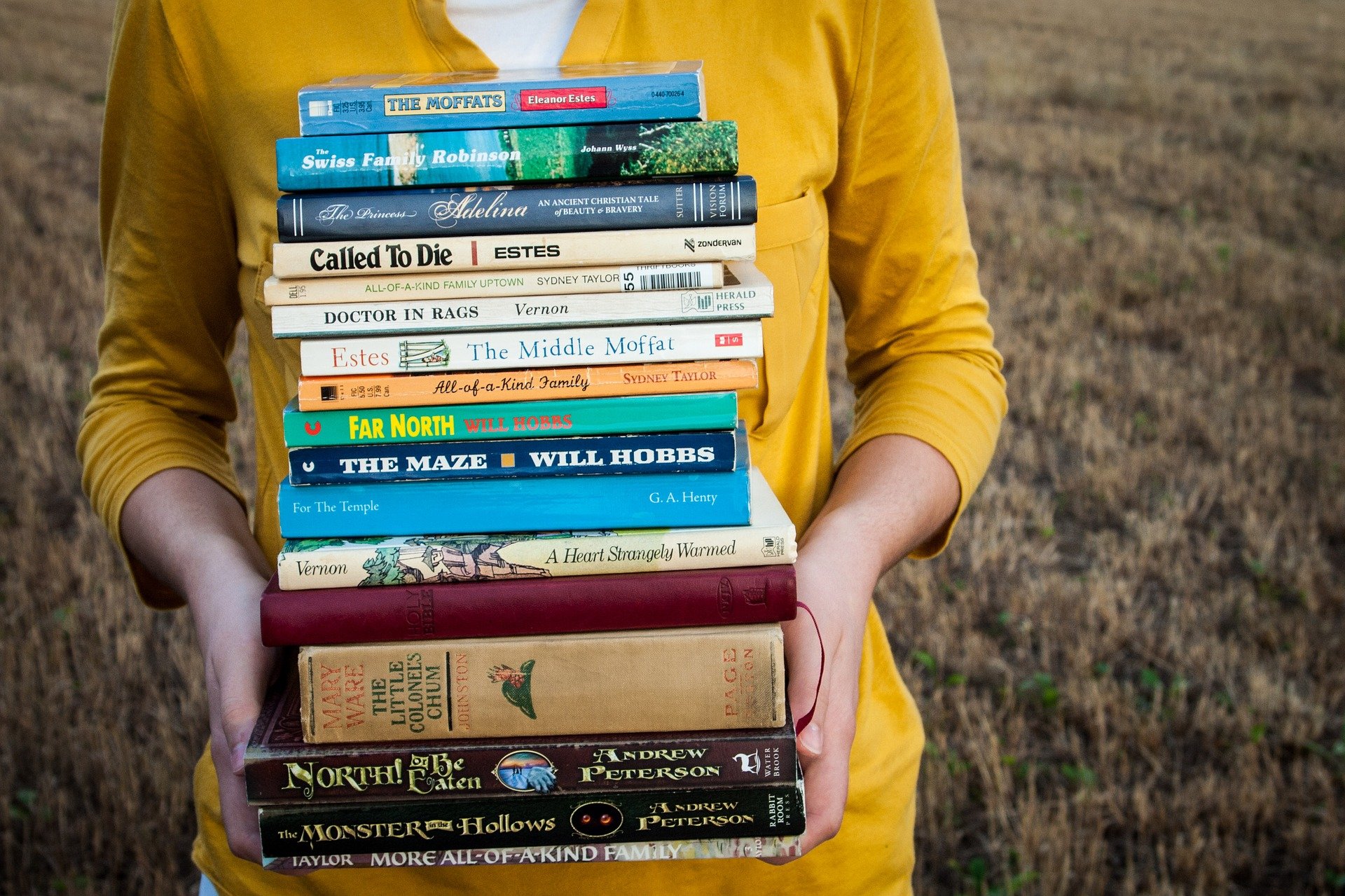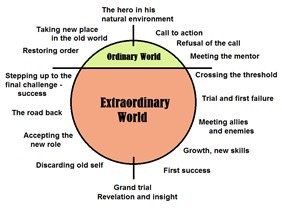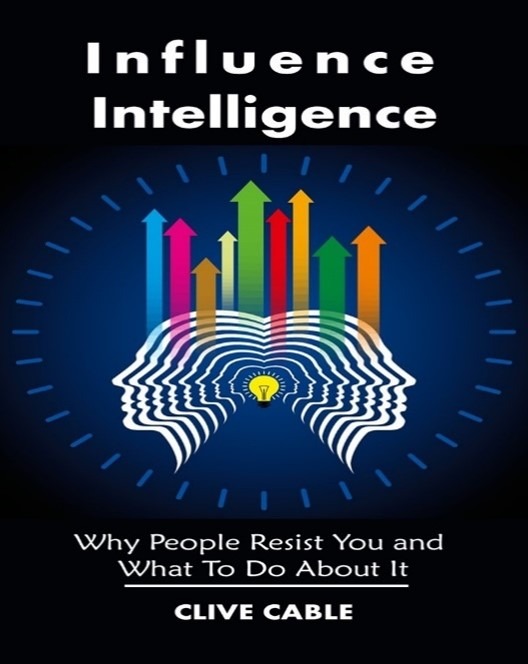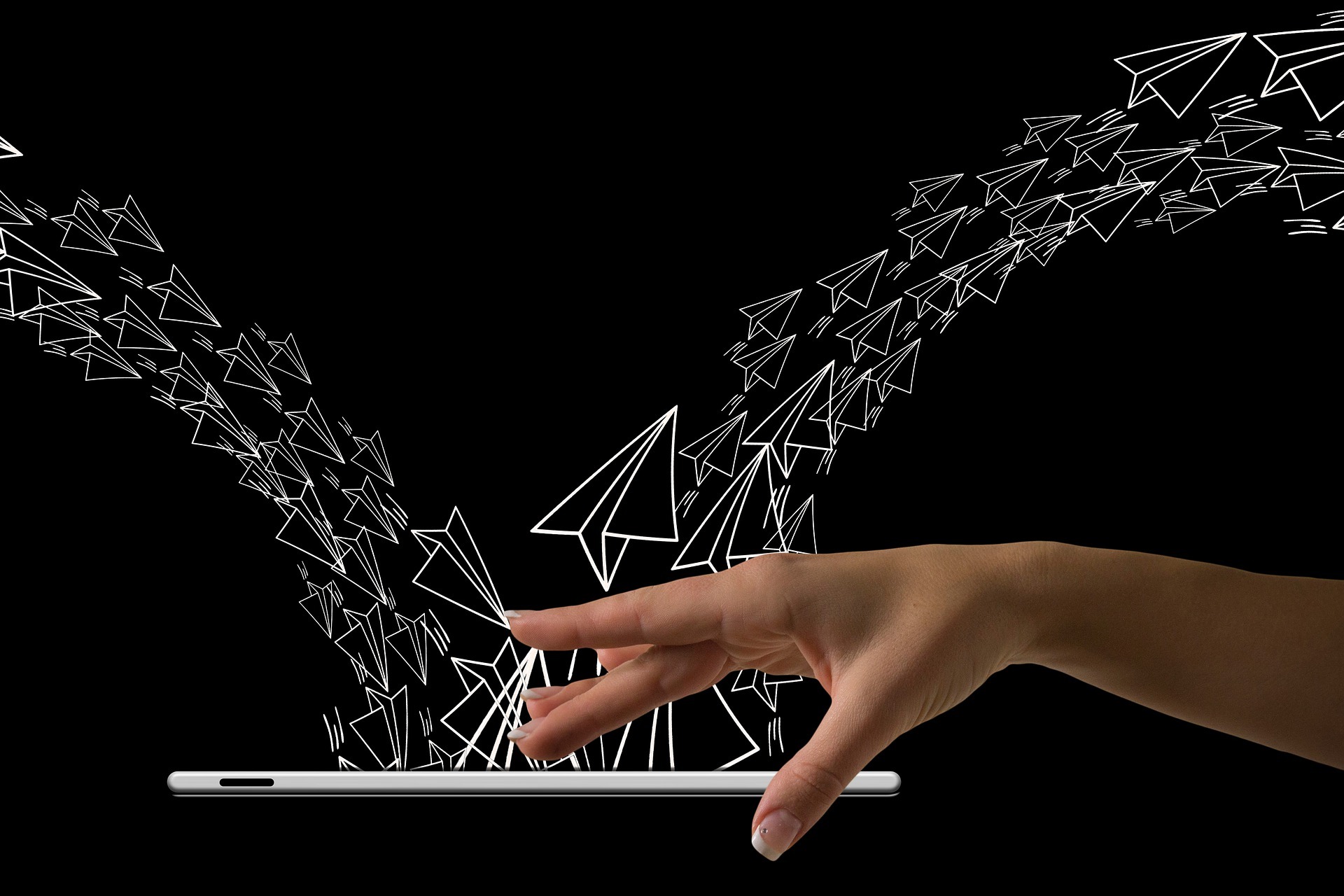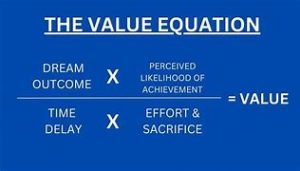How to Influence the Subconscious Mind.
If you’re a beginner copywriter start with stories.
Here’s how and why stories persuade.
An example…
Truth walked into a village.
The locals started cursing her.
Spewing insults, they chased her out of the village.
Truth walked along the road to the next town.
They spat at her and cursed her and called her names, driving her out of town.
She walked, lonely and sad, down an empty road, until she reached the next town,
still hoping to find someone who was happy to see her, who would embrace Truth with open arms.
She walked into the third town, this time in the middle of the night, hoping that dawn
would find the townsfolk, happy to see Truth with dawn’s light.
But as soon as they townsfolk’s eyes lit upon her they ran to their homes
and then came back throwing garbage at her.
Truth ran off, out of town, into the woods, and after crying, and cleaning off the garbage,
returned to the edge of the woods, when she heard laughter, singing and applause.
She saw the townsfolk applauding as STORY entered the town.
They brought out fresh meats and soups and pies and pastries and offered them all to STORY.
Who smiled and lavished in their love and appreciation.
Come twilight, Truth was sulking and sobbing at the edge of the woods.
The townsfolk disdainfully ignored her, but STORY came out to see what the story was.
TRUTH told STORY how all the townsfolk mistreated her, how sad and lonely she was,
how much she wanted to be accepted and appreciated.
STORY replied, “Of course they all reject you, “STORY looked at TRUTH, eyes a bit lowered to the side.
“No-one wants to look at the naked truth.”
So, STORY gave TRUTH brilliant, beautiful clothing to wear.
And they walked into the town together, TRUTH with STORY.
And the townspeople greeted them with warmth and love and appreciation,
for TRUTH wrapped in STORY’s clothing is a beautiful thing and easy to behold.
And ever since then, truth travels with story, and they are always accepted and loved.
And that’s the way it was and the way it is and the way it will always be.
Copywriting for beginners part 1.
What you need to know about Brain Power.
Before your brain is fully developed your emotional and reptilian brain dominated.
That is to say the most primitive parts of your brain that look to survival and relationships, control the way you look at life.
It isn’t until your late teens does your neo-cortex (the thinking, rational brain) begins to come online.
Some say the emotional and reptilian parts of your brain is the equivalent of your subconscious mind.
If that’s true then when you and I were first exposed to stories it was before our adult brain was formed,
and therefore story goes directly to the subconscious mind.
Interestingly, the most mature part of your brain tunes out when it’s exposed to story.
In other words, when you hear a story it’s as if you were a child again.
And you enjoy this familiar feeling immensely.
That might explain why fiction outsells non-fiction by a whopping 500 – 1.
Netflix has over 5,000 (mainly fiction) titles to choose from.
And in most bookshops the children’s and adult fiction sections are larger than all the other sections combined.
What has that got to do with copywriting for beginners?
Everything!

There are six most popular ways to start a sales message with.
-
The offer.
-
The promise.
-
The problem and solution.
-
The secrets or ‘system’ method.
-
Stating an emotionally compelling fact.
-
Compelling story.
The first three are bold and direct, great for existing customers.
The last three are indirect, great for cold traffic.
However, because of the ever-growing competition online what used to work doesn’t today.
Unless your advertising message is anything but advertising to consumers.
And that’s where stories are crushing it right now.
Because stories sell to the subconscious mind, prospects are attracted to them and never feel like they are being sold to.
Remember, no one likes to be sold to, but everyone loves to buy.

Scientific subtlety.
Researchers say that we enjoy fiction because that’s the way we learn about life.
Meaning, we learn about life through story.
When Joseph Campbell discovered the structure of stories handed down from generation to generation, he called it, “The Hero with a Thousand Faces.”
In other words, it’s the same story structure but the hero is different every time.
Hence the 1,000 faces.
Story craftsmen and women call this structure “The Hero’s Journey.”
It is this hero’s journey framework that makes books and movies best-sellers.
And the reason?
Because it taps into our unconscious mind. Each and every one of us is on our own hero’s journey.
We are all somewhere along the continuum of this model.
Copywriting for beginners part 2.
The Heroic Journey.
When you watch any blockbuster movie from now on, see how far you can follow the hero along his or her journey.
The reason is because when you begin your copy with story you will use this model as your guide.
However, there is another model available to make your story even more believable, compelling, and persuasive.
Another thing our subconscious mind is doing while you’re busy daydreaming is to better itself.
As a child your first actions are to survive. Then you want to find security as you advance through your childhood years.
As a teenager you want to find love.
As a young adult you want meaningful work and feel good about what you do.
Then later in life you find your calling.
This, is what Abraham Maslow called “The Hierarchy of Needs.”
He was the first psychologist to study normal people.

Maslow’s Triangle.
As you can see, survival is at the bottom. When we feel we can survive we strive for security.
When we feel we are secure enough we look for relationships and love.
Next is self-esteem, feeling good about ourselves and what we do.
Then there’s self-actualisation. The need to find our calling and have mastery with our craft..
Right now, as you’re reading this you’re moving into self-esteem, on your journey to mastery and self-actualisation.
What happens to your story when you combine the Heroes journey with Maslow’s hierarchy?
You create a magical, hypnotic effect on your readers.
If you haven’t seen the movie “Miss Bala” we recommend you watch it.
The story starts out with our Heroine in her ordinary world.
The reluctantly becomes a hero when she goes to a night club with her best friend, who she calls ‘family.’
When she goes to the loo, villains break into the night club through the vents in ladies’ toilets.
One of them discovers her and because she’s an American he gives her 10 seconds to leave.
But she chooses to go back into the nightclub to save her friend.
She can’t find her friend and gets kidnapped by the leader of the drug cartel.
Here we have
Act one.
Ordinary world.
Call to adventure.
Refusal of the call.
Meeting of the mentor. (He is also the villain.
She is forced against her will over the first threshold into a new world.
What drives the story is the plot. “The hero wants something but is having trouble getting it.” She wants to find her best friend.
Act two.
Goes through tests after she meets the villain.
The first test is escaping from the villain..
That leads to a “Sophies Choice.” A dilemma between two evils.
(Anytime you can insert a Sophies choice in your story you ramp up the reader’s engagement.)
In the movie the Sophies choice dilemma creates even more conflict.
(Remember, without conflict there is no story.)
And now as the story progresses we see her unwillingness to compromise.
(And that is what makes this story brilliant. In your story show how you as the hero were unwilling to compromise.)
Understanding Maslow’s triangle for telling persuasive stories.
Fiction writers have a peculiar habit of turning Maslow’s hierarchy of needs upside down.
-
Survival. (at the top.)
-
Security.
-
Love.
-
Self-esteem.
-
Self-actualisation. (at the bottom.)
Fiction writers want to keep the hero in survival mode as long as possible.
They release the tension by switching scenes to a different story that includes other characters like the villain or someone close to the hero.
It is rare to let the hero go beyond survival mode. But there is a hint of hope when the hero feels some sort of security.
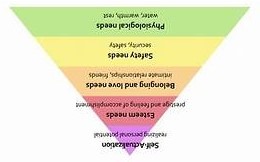
That said, let’s turn the Maslow pyramid the right way up.
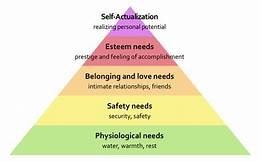
This pyramid first appeared in the book by Maslow called, “Motivation and personality.”
In essence it’s about how a person is naturally motivated to go from one section of the pyramid to the next.
And even when life gets tough and we go back down the pyramid, we still strive to go back up.
At the bottom is survival and at the top is self-actualisation.
Now, we know through the classic hero’s journey that the hero must transform and become a better version of herself otherwise the story is dull or has an unsatisfactory ending.
Meaning the hero dies and doesn’t reach their full potential.
Or boy meets girl. Girl dumps boy. Boy commits suicide.
No one wants to see that.
The movie “Groundhog Day” does a convincing job of hero transformation.
So, if you as the hero has to transform how do you write that into your story?
You use the hero’s two journeys.
-
The outer journey. What the hero accomplishes.
-
The inner journey. What the hero becomes.
Of the two the inner journey is the one to focus on.
I’ll tell you why in a moment.
In the film “Miss Bala” the Heroine starts off in her ordinary world and is in the ‘love’ section of Maslow’s pyramid.
When she crosses the first threshold in the hero’s journey model she is forcibly moved down the Maslow pyramid to survival mode.
And there she stays through two thirds of the second act where she is in the world of the villain.
This is almost the same approach E.L. James takes in the best-selling book, “50 Shades of Grey.”
Copywriting for beginners part 3.
How the Hero’s Journey fits in with Maslow’s triangle of needs.

However, if you want to start your story in the middle of the action like the 6th sense” then the hero must be in survival mode.
Then you tell the back story starting from the point where the hero is in their ordinary world, everything is okay, and they are in the love/belonging section of Maslow’s pyramid.
You then take the story back to where you started.
As the story progresses the hero loses all of their security and is now down in survival mode.
Then you keep the hero in the survival mode by introducing the devilish villain.
Or anything that’s preventing the hero from getting what she wants.
In the movie “Miss Bala” our heroine goes on a roller coaster ride through survival and security.
It looks like she’s trapped.
(This is what you must do in your story to keep your prospect hooked.)
Typically, the hero is given some skill or a magical device that will later save the day.
In Miss Bala, the villain (in this case also her mentor) teaches her how to handle an automatic rifle.
At the end of the movie that rifle is vital to the plot.

In “The Count of Monte Christo,” the hermit, played brilliantly by Anthony Hopkins, teaches the hero to swordfight.
And at the end of the movie his sword fighting skills save the day.
Think Harry Potters Magic wand. Luke Skywalkers lightsaber, and Spiderman’s Spidey powers.
All of these ‘gifts’ are crucial to the story’s climax.
In your story, show how you met a mentor and the ‘gift’ he or she gave you.
Do this early in your story so you can use it at the end to win the day against your villain.
You must have a villain. And the meaner, smarter, stronger the villain is, the better you must become at defeating him.
The transformation technique explained.
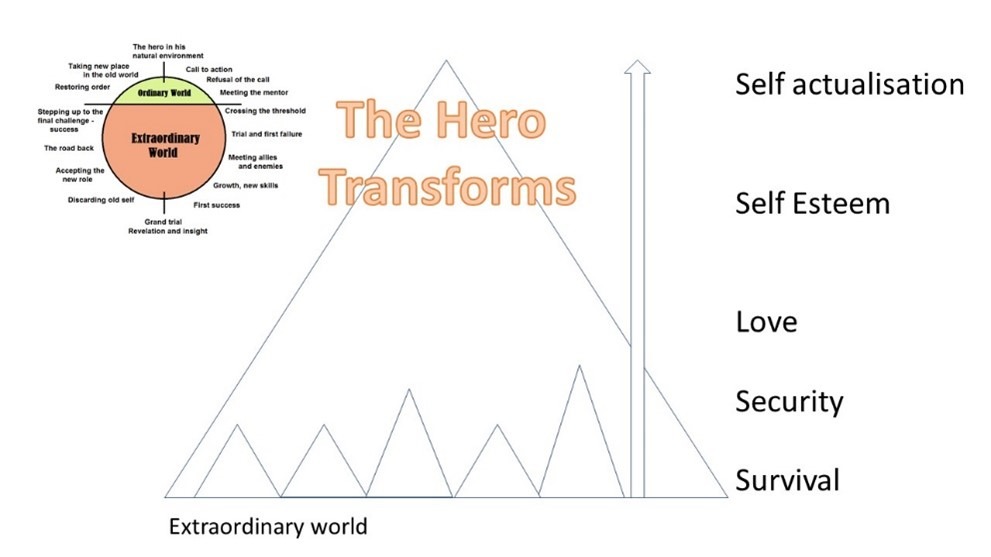
Our Heroine in Miss Bala is forced to play the victim most of the movie, and that’s what keeps her in the survival mode.
However, as the story moves forward every now and then your given glimpses of the strength of her personality as she zig-zags through survival and security.
20 minutes from the end of the movie she ‘wins ‘ the rigged Miss Bali contest. And it’s only then do we see her self-esteem begin to rise.
In the Maslow pyramid that’s the one above love.
Now, we start to see her transform.
Then she finds her friend, (her quest) and finds out her captor who she trusted, tricked her.
The plot takes her from victim to vengeance.
Soon after she uses the automatic rifle to kill her captor and win the day.
Self-esteem and self-acceptance accomplished all in one scene.
But the transformation is not yet complete.
Because of her heroic actions the CIA invite her to become an agent.
Seeing her friend and godson fulfilling her love needs.
Only then does she feel she can go to self-esteem and self-actualisation.
Now she comes back to her ordinary world transformed.
When you combine the Hero’s journey with Maslow’s pyramid you have a powerful guide to create your compelling story.
Copywriting for beginners part 4.
Putting it all together.
Here is an example of a back story I wrote for one of my clients.
It all began the week before Christmas in 2006…
I sat frozen in a large room on an old wooden chair waiting anxiously for the verdict.
She looked at me with those cold blue eyes then looked down at her notes.
Slowly her eyes moved back up to mine.
She paused for what seemed like a minute.
Her soft words were as loud as a megaphone.
“You have a cancerous Squamous cell carcinoma’ in your main Aorta artery.”
“What? What does that mean?” I reeled.
She looked away for a moment, as she looked back she raised a brow, her eyes bored into me the way only doctors can when they deliver the death blow.
“You have twelve weeks left to live.”
I lowered my head.
My mouth fell open.
I felt dizzy, then cold to the core.
Gripping the arms of the chair I stared into space.
Six months earlier I was living my dream over in Western Australia.
This was all thanks to my husband at the time. He had the idea we could save our marriage if we started fresh.
If we went somewhere new, the excitement would return.
I believed him. He’s a good man, I said to myself, go with it and start over.
So, we upped and moved 6,000 miles to the western side of paradise known as Australia.
The land of dreams.
As soon as we arrived, I felt at home. This is where I’ll spend the rest of my days.
Back home I had a hairdressing – beauty – therapy – wellbeing business, I opted to stay in the health industry because that was what I knew and what I was good at.
I knew every customer my name, I knew about their family and even their hobbies.
Leaving them all behind was almost as hard as leaving my family. It was the only time in my life when I wished I could be in two places at once.
But I knew the past does not equal the future and I had to let go and move on.
Within my first year in Western Australia, I created a phenomenally successful handmade candle business.
Life was good, I was living where I wanted, and how I wanted.
You’d think having five outlets, and 38 advisors teaching people how to heal their lives through, candlelight, colour and essential oils was hard work.
For me it was a breeze. (Excuse the pun.)
Money wasn’t a problem as I could buy almost anything I wanted.
I loved what I did in my new world, my clients and my advisors all loved me and what I did for them.
Yes, the health business is a good business to be in. Except when your health is not so great.
After another 12-hour day, my husband woke me in the middle of the night telling me he wanted a divorce.
“Uh?”
At first I thought it was a just another bad dream.
Okay, I knew we had grown apart, but I thought he was still happy to be with me even though I admit our marriage was lifeless.
Then came the next bolt from the blue.
Over breakfast he asked me for the impossible.
I knew he loved being a Yorkshire man and his family meant the world to him.
Pouring out the coffee he said, “My family are back in England and I want their support for when I’m on my own. I want to go back there for the divorce.”
Don’t get me wrong, my ex-husband was a good man, and we emigrated to our new life in the land of opportunity with eyes wide open.
I wanted to stay friends with him.
Even though I felt Australia was our dream home from home.
Except now, it was more like paradise lost.
As difficult as it was, I knew I couldn’t say no. Not to him.
Little did I know how much damage that was doing to my health.
Looking back, I had been living with some pain and emotional chaos.
It was like something vile was creeping up inside of me waiting for just the right moment to devour me.
When my doctor called me in to her office all she could say was, “Please sit.”
I remember thinking, I have not been ill all my life, and for months, nothing showed up in tests.
Yet for some time I felt as though my ‘internal light’ was flickering instead of burning bright.
Some days, I felt like I was dying inside.
At least that was how I described the feeling to my doctor.
Last month I’d told her that one morning I woke with a massive lump on the right side of my neck.
To the rest of the world, I was a confident, high achieving, and happy person.
That was until she said in that cold voice of hers, “You have a cancerous Squamous cell carcinoma in your main Aorta artery.”
“What? What does that mean?” I could barely speak.
She looked away for a moment, when she looked back, her eyes burning into mine.
And then those seven searing words smashing into my soul.
“You have twelve weeks left to live.”
I sat there like a slack jawed fool.
I felt dizzy, then cold to the core.
This was only one week before Christmas.
She asked, “So, what will you do this Christmas?”
Still dazed I asked “why?”
“This is going to be your last one.”
I felt my muscles tightening around my jaw, my teeth pushing together hard.
Clenching my fists, I said through pursed lips. “I don’t have time to die.”
As soon as I said that I felt an immediate sense of calm.
The look on her face was priceless.
She never spoke another word, and she and I knew we would never see each other again.
Not because I was going to die in three months’ time, but because I knew in my gut she was wrong.
Obviously, my doctor had no clue about me.
I was going to live, and live better than before.
It was crunch time.
Immediately I went back home and started preparing my life as if I were going to die.
The truth was my old life had already died.
And I knew whatever happened from here on – I was going to live my life differently – the kind of ‘different’ most people cannot see.
I knew I could beat this cancer, but I admit my back was against a wall.
If I was going to make it – my new life starts today.
I sold everything I owned except my clothes and the house I was living in.
And I even sold my precious business, in record time.
What was I going to do now?
It soon dawned on me I was looking at death, and a new beginning both at the same time.
But I knew the past does not equal the future.
Even though the diagnosis was “real,” I felt in my heart my time to die was not now.
But trying to figure out the future was like trying to straighten out a bowl of spaghetti.
I had to get rid of this massive lump on my neck, so I reluctantly agreed to a small operation.
It was either that or I’d lose my voice.
The operation was a success and after a short rest I was up and about again.
One morning on my way to see a friend I had an image popped into my mind.
It was a giant jigsaw puzzle with all the pieces taken out.
When I got to my friend’s house I knew I had to tell her.
“What if all the pieces of your life’s “jigsaw” were to fall out and you had the chance to replace each piece of the puzzle exactly the way you want it?” I asked her.
She quickly replied, “Oh my goodness, then you’d have a perfect scene called your dream life.”
We sat and talked for hours. I’d never drank so much tea.
By the time I left I had a clear image in my mind. Now it was time to go find all the pieces I needed to complete the puzzle of my new life.
Google soon became my new best friend.
The first piece of the puzzle was nutrition.
Next was mindful meditation.
Then nature, massage, homegrown vegetables, and fruit.
I even went on long retreats.
The next piece of my puzzle came more as a shock than anything else.
It was something I thought I’d dealt with years ago.
Obviously not.
When my mother died of cancer 18 years ago I never took the time out to mourn her passing.
I concluded that grief could stop me from living a life of passion and joy.
That was when I choose professional help.
I knew if I didn’t then anything from the past could sneak into my jigsaw puzzle and ruin the scene I’d so carefully envisioned.
Over my life I took on the false beliefs of those who had authority over me. I realised the inner work is as important as the outer work.
For the next six months I sought out councillors and coaches. One after another, until I’d cleared away all of the fog clouding my vision.
I kept reminding myself the past does not equal the future and I had to let go and move on.
As more and more pieces of my jigsaw came together I began to feel different.
Having beaten my cancer, I finally felt worthy of happiness.
People started coming into my life at just the right time to give me the next piece of my puzzle.
As I cleared my mind of all the old jigsaw pieces, new habits and new beliefs began to emerge.
It was these new habits and beliefs that formed the new powerful image in my mind.
During these moments of reflection and visualising, I began working with clients on a one-to-one basis, sharing some of the insights and wisdom bestowed on me during my dark times.
My jigsaw was almost complete.
As I continued to visualise my future there was only one piece of my puzzle missing.
My purpose.
As soon as I found that I could enjoy a healthier life, mentally, emotionally, and physically, with Inner peace and freedom, I knew my mission was to help others just like me.
I wanted to take this one client out into nature, but it rained so hard I knew we’d be soaked in a second.
So, I decided we would do some indoor yoga instead.
I reached up to my bookshelf to grab my yoga anatomy bible, but I pulled out a book I hadn’t seen before.
It was “The Golden Book of Yoga Terms.”
The book fell open in my lap and for some odd reason I began reading a short passage out loud to my client.
“Transforming darkness (GU) into light (RU) gives us GURU, a spiritual teacher. Universally “Gurus” point the way, solutions lie within the searcher.”
It was during a session with that one receptive client that I realised, there’s a lot of women out there who need the opportunity to know about and learn of the valuable options for their own future choices, just like I had.
Then it hit me.
There are fabulous practitioners out there, in and around my life. My councillors, coaches and confidants had helped me triumph over my cancer.
Battling and beating cancer meant that I knew and understood one of the main causes of early death.
What if I could bring all these health guides together in one place as the ultimate resource for women who are in a health crisis?
Once I realised that I can only complete my own jigsaw puzzle of life by helping others complete theirs, I began my search for other empowered men women with healing talents to join me in creating a transformed state of health for you.
And that’s how I’d like you to think about this, as if you had arrived at a new world, one completely different from the one you know.
A world where you can be your best free from stress or almost every kind of problem that ails you.
Remember what I said right at the beginning.
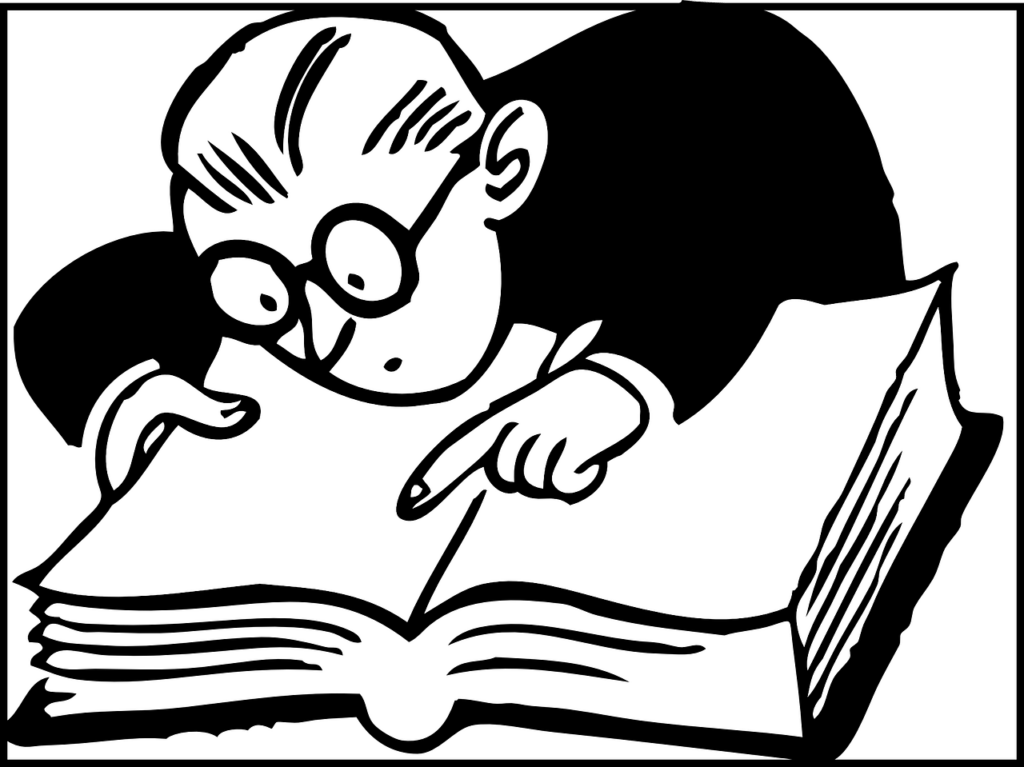
“For every illness there is a place on earth where it doesn’t exist.”
I believe wellbeing is the new currency. And like any currency you can use it to give you a better life.
The more wellbeing you have, the richer life you’ll enjoy.
Can wellbeing be measured?
Of course. Just as any form of currency can be measured.
You can be health rich, or health poor.
It’s your choice.
If you are health poor then you have no currency to spend and life can be frustrating, painful, or lonely.
But if you are health rich you have all the currency you need to enjoy life to the full.
When you look at how COVID has forever changed our world, you’ll soon realise what it’s doing.
It’s taking away our wellbeing currency.
Now, more than ever, we need to hold onto and even expand our wellbeing currency.
And that is what this website is all about.
Now, let’s imagine that you and I have a “Health Bank Account.” And inside this bank account we have our wellbeing currency.
As I said, the more of this wellbeing currency you have the richer your life can be.
Let’s go back to your health bank account for a moment.
If for whatever reason you find yourself in health debt then you’re in the right place at the right time.
Here in this (name of website) you’ll find all the resources you’ll need to make positive health deposits into your health account and reverse the debt and merge into health abundance.
You’ll have your new wellbeing currency to go out and spend on creating the life you’ve always wanted, full of energy, vitality, and love.
Please, allow me to be your guide from the dark to the light.
In conclusion…
So, there you have it. Insights into writing compelling stories for yourself and your clients.
In our “Influence Intelligence Mastery” course there is a set of questions I ask my clients before I write their story, or their ‘about me’ page.
Then there is another set of questions that reveal their likable traits.
If you watch any series fiction of blockbuster movies you’ll always “fall in love” with the main character.
Fiction writers use 14 secret techniques to keep you riveted to their hero.
Guess what?
Through years of research, watching Netflix and tedious trial and error, I discovered what they are. And if you want to write amazing stories that sell, you, your company and what you offer then you must have these secret techniques.
To get this secret techniques enter your email address and I’ll give you a cheat sheet you can use to begin creating your own stories.
